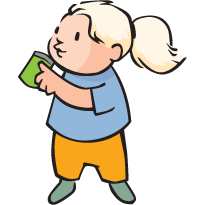Boston Children's Museum
308 Congress Street, Boston, MA 02210
617-426-6500
© Boston Children’s Museum 2025
Website Design by JackrabbitGiving children the opportunity to get in touch with their senses can help make them better observers – a child who is tuned in not only to what they are seeing, but to what they are hearing, smelling, touching and tasting as well, is armed with a complete toolbox as they work to understand the world around them. Try this activity to help kids become more familiar with their sense of smell.
You’ll need to prepare the “smelly cups”. A good option is using extracts found in the baking aisle of the supermarket. Extracts can be found in flavors like strawberry, mint, maple, almond, orange, lemon, vanilla, etc., and they are very strong—a little goes a long way! Put a few drops on a cotton ball, drop the cotton ball into the film canister or cup, and it should last for a while. Make at least 5 sets of smells for each team.

Ask your students what some of their favorite smells are. What are some smells they don’t like? Make a list on a chalkboard or piece of chart paper of the group’s “favorite smells” and “least favorite smells”.
Think you can guess what something is just by smelling it?
After 5-10 minutes, bring your students together to share their observations with each other. Is it easy to tell what’s what? Have them share their guesses of what is in each container—does every team agree? Write each container number on chart paper or a chalkboard and record their guesses. If they can’t tell what a smell is, ask them if it reminds them of anything. Next, tell them what the smells are, but not which containers they are in. Does that change any of their guesses? Finally, share with them what smells are in which container.
After the discussion, have your students go back to their teams and challenge each other to guess what they smell while blindfolded. Have one student, the “smeller”, place a blindfold over their eyes (or simply close their eyes) while the other team members choose a smell and hold it under the smeller’s nose. Can they guess what it is? Students should switch roles so everyone has a chance to try.